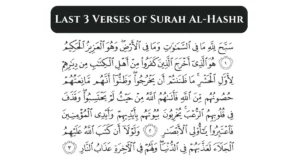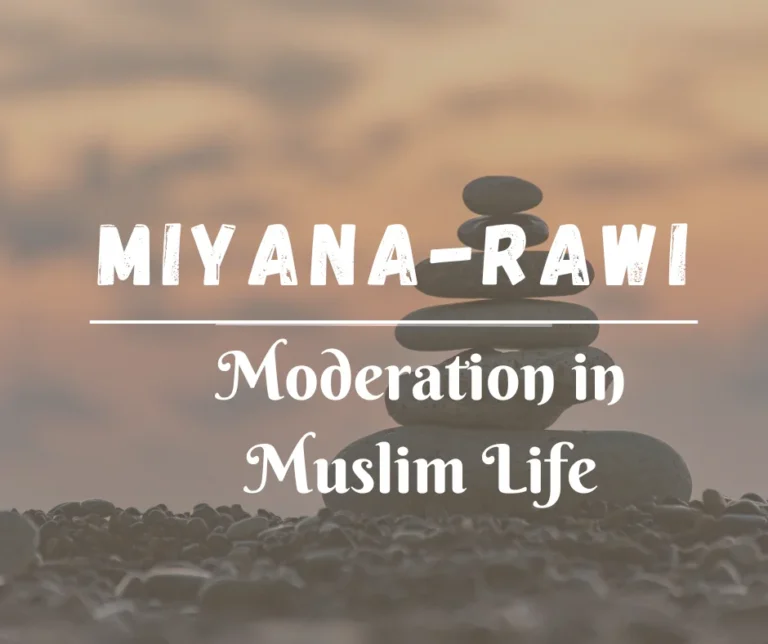Background of the Battle
The Battle of Hunain, which took place in 630 CE (8 AD), was a significant event in the early History of Islam. The name “Hunain” comes from a valley between Mecca and Ta’if in the Arabian Peninsula. After Prophet Muhammad (SAW) and his followers conquered Makkah, they aimed to spread Islam further.
However, they encountered resistance from the two major crews, the Hawazin and Thaqif, who opposed accepting Islam. This battle showed the strength of Prophet Muhammad (SAW) and his followers and their ability to attract more people to join Islam. It also illustrated how alliances and loyalties could shift based on who appeared more influential at the time.
For more information about the Muslim takeover of Makkah, please visit our other blog post: Conquest of Makkah: A Revelation of Faith and Forgiveness.
Battle of Hunain in the Quran
The Ghazwa of Hunain is mentioned in the Quran in Surah At-Tawbah (Chapter 9). These verses highlight the initial overconfidence of the Muslim army, their short retreat, and the following divine help that led to their victory. The verses are as follows:


These verses highlight the importance of faith, humility, and Allah’s (SWT) continued mercy and support in Muslim struggles.
The Refusal of Hawazin and Thaqif to Accept Islam
During the Battle of Hunain, The crews of Hawazin and Thaqif were among the most powerful in the Arabian Peninsula. Although seeing the fast spread of Islam and the increasing number of crews converting, they firmly rejected Islam for many reasons:
- Pride and Traditional Beliefs: They were proud of their traditional beliefs and customs and saw Islam as a threat to their way of life.
- Economic Interests: They feared accepting Islam would harm their financial interests, especially the income from pilgrimages to their shrines and idols.
- Political Power: Accepting Islam meant submitting to the political authority of Prophet Muhammad (PBUH) and the Islamic state in Medina, which they saw as a loss of their power and impact.
Preparations and Strategy of the Hawazin Crew
Malik ibn Awf Al-Nasri led the preparations to face the Muslim forces. They brought their women, children, and livestock to the battlefield to motivate the fighters to protect their families and custody. This move made retreat unthinkable for the warriors. Malik also sent spies (secret agents) to gather information about the Muslim army. Based on the spy (secret agent) reports, they planned a surprise attack in the Hunain Valley.
The Prophet’s (SAW) Army: Confidence in Numbers
In the battle of Hunain, The Messenger of Allah (SAW) commanded an army of 12,000 soldiers. This shows how they used smart and wide-ranging military practices of the time. These strategies were productive and included people from different backgrounds. Ten thousand of them had accompanied him from Madinah. They had participated in the conquest of Makkah, while the remaining two thousand were from the Quraish crew, who had recently accepted Islam.
The Messenger of Allah (SAW) appointed Hazrat Attab Ibn Asid Ibn Abu Al-Aas Ibn Umayyah Ibn Abd Shams (RA) to be in charge of Makkah and oversee the men who had stayed behind. Then, He (SAW) moved forward to meet the Hawazin crew and their supporters.
The mixed group’s confidence was likely upheld by their sense of brotherhood and collective belief in their mission. This unity and belief were important as they often faced opponents who exceeded them or had superior tools.
The Beginning of the Battle in the Valley of Hunain
On the night of the 10th of Shawwal, the Muslim army reached the Hunain valley. A spy informed Malik bin Awf about the arrival of the Muslim Army. He ordered his 4,000 soldiers to hide themselves in the valley and wait for the Muslims. They were instructed to shoot arrows at the Muslim soldiers upon sighting them and then attack them one by one.
The Crisis and the Prophet’s (SAW) Steadfastness
When the Muslims set up camp, they were heavily showered with arrows as their enemies’ troops strongly attacked them, causing the Muslims to retreat in confusion.
According to Ibn Ishaq, Hazrat Jabir Ibn Abudllah (RA), who witnessed the Battle of Hunain, said:
“When we approached the valley of Hunain, we fell through a wide and uneven valley in the morning darkness. The enemy had arrived before us, hidden in its paths, side tracks, and narrow places. They were fully prepared, and, by Allah (SWT), we were scared when the troops attacked us all at once, causing the people to run without listening to each other. Many of the men ran away, but many Muhajreen (Muslims who migrated with Prophet Muhammad (SAW) from Makkah to Madinah), Ansar (Muslim residents of Madinah), and men of the Prophet’s family remained with him. Hazrat Abu Bakr (RA), Hazrat Umar ibn al-Khattab (RA), Hazrat Ali ibn Abi Talib (RA), Hazrat Al-Abbas bin Abdullah (RA), Hazrat Abu Fadl Al-Abbas (RA), Hazrat Usamah Ibn Zaid (RA), and Abu Sufyan were among the Muhajireen who stood firm with the Prophet (SAW).”
When the men started running, the Messenger of Allah (SAW) moved to the right and said,
“Where are you going, men? Come to me. I am Allah’s (SWT) Messenger. I am Mohammad (SAW), the son of Hazrat Abdullah (RA).”
Turning the Tide: The Prophet’s (SAW) Call to Faith
The Prophet Muhammad (SAW) said his uncle Hazrat Abbas (RA), holding his horse, to call out to the Muslim warriors who had promised loyalty to him under the Samura tree. Hazrat Abbas (RA) called out loudly.
When the Muslim warriors heard Hazrat Abbas’s (RA) strong voice, they stopped running away. As dawn broke and it became brighter, they overcame their fear. They questioned themselves, “Where are we going? Who are we leaving the Prophet Muhammad (SAW) to?”
They remembered their promise to the Prophet (SAW), regained their courage, and ran back towards him. The same thing happened during the Battle of Uhud.
Then, the Prophet (SAW) gathered a hundred men, and they advanced to fight. The companions surrounding the Prophet (SAW) tightened their swords, shouted “Allah-u-Akbar,” and attacked the enemy. The enemy soldiers were suddenly fearful. Companions like Hazrat Usman Ibn Affan (RA), Hazrat Ali Ibn Talib (RA), and Hazrat Abu Dujana (RA) fought in front of the Prophet (SAW), using their bodies to shield him.
During the toughest part of the battle, Hazrat Ali (RA) and Hazrat Abu Dujana (RA) killed one of the enemy’s flag-bearers. When the Hawazins saw this, they became scared.
Victory at Ghazwa of Hunain
In the final phase of the battle, the Muslim army, strengthened by their faith and divine support, defeated the Hawazin and Thaqif crews. Despite the enemy’s initial advantage, the Muslims’ faith and strategic leadership led to victory. This success at Hunain shows the power of faith and divine help in overcoming hardship. The win further solidified the Muslim position in Arabia, showing that faith and strategic planning are key to overcoming challenges and achieving success.
Aftermath of the Battle
After the crew’s downfall at the Ghazwa of Hunain, the crews of Hawazin and Thaqif faced significant consequences. Initially, they suffered heavy losses in terms of lives, property, and captives. The Muslims seized a large amount of wealth and took many prisoners, including women and children.
Recognizing their weak position, the leaders of Hawazin and Thaqif sent a delegation to Prophet Muhammad (SAW) to seek agreement. The Prophet (SAW) showed kindness and mercy by freeing the prisoners and returning their property, encouraging the crews to accept Islam.
Impact on the Muslim Community
The victory at Ghazwa Hunain impacted the Muslim community, strengthening their faith and combining their power in the region.
- Implications for Future Movements: The victory provides the way for future movements by showing Muslims as a top force in Arabia. It also served as a powerful message to other crews and regions about the strength and stability of the Muslim state.
- Strengthening the Islamic State: The battle’s success helped consolidate the Islamic State by bringing more crews into the fold and ensuring their loyalty. It also showed the leadership qualities of Prophet Muhammad (SAW) and the principles of Islamic governance, which were based on justice, mercy, and the purpose of the common good.
Overall, the Ghazwa of Hunain significantly affected Islam’s spread and the stability of the Islamic state. This marked a turning point in its early history.









